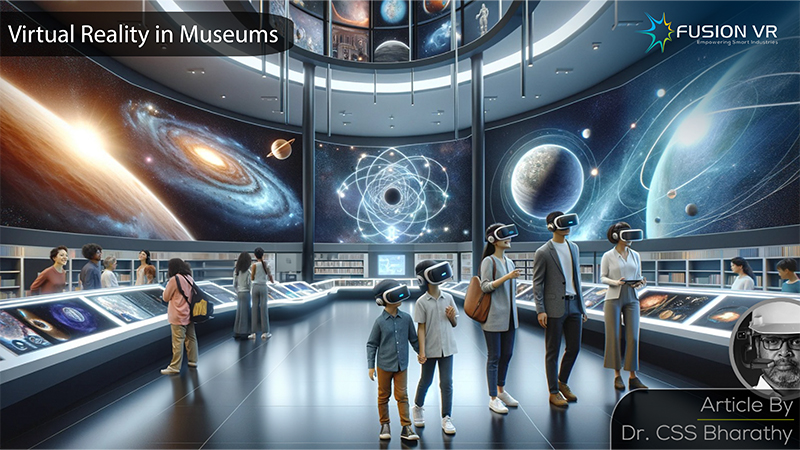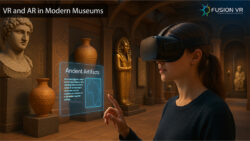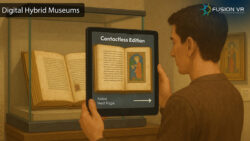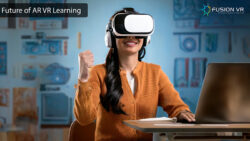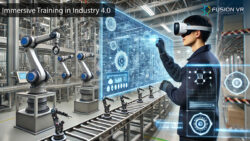Museums are transforming themselves greatly in the 21st century. For those who grew up in the 20th century would recall museums as places their school would take them on day trips. This must have been a few times, particularly during their time in elementary school. More than the interest in museums, the primary source of fun was for kids to hang out with their friends in some place other than school. The bus ride and lunch would have been more memorable than most of the artifacts, sculptures and skeletons they would have seen there. This is quite normal and nothing much to complain about as that is how children usually are. This scene has changed and many museum visits are planned, organized and conducted better, thanks to both the teachers and the museum staff.
The main reason for this is how traditional museums have been transformed into powerhouses of digital innovation. They have embraced many of the leading technologies to not only upkeep valuable collections and artifacts, but also to provide a more enriching experience for all kinds of visitors. The change between the last millennium and this one is the pervasive influence of technology in all aspects of our lives. Museums have also learned that they need to sustain themselves on their own and not rely on government funding and private donations. To sustain on their own, they have realized that museums need to create experiences that make people interested in visiting them. Great museums across the world serve to promote tourism in their countries and attract millions of visitors from all over the world. Nearly 9 million visitors came to the Louvre in Paris, France. That kind of footfall, delivers a sizable revenue that can be utilized for the upkeep of museums and improve visitor experiences.
One of the main technological innovations that museums are embracing is virtual reality. Virtual reality is one of the most innovative technologies that is helping towards the transition to a new paradigm commonly referred to as Museum 2.0. This new paradigm for museums is about incorporating the latest interactive technologies, immersive exhibits and creating unique visitor experiences within the traditional physical museum. Virtual reality helps to create wonderful experiences that stretch the limits of our imagination. We can digitally create environments that mirror existing ones or create one that is entirely depending on our imaginative and creative skills. Virtual reality technology leads people to believe they are in a real environment even though they are witnessing a digitally recreated reality. The human brain falls prey to believing this reality and enjoys the experience it delivers as real. This is the most important factor that leads to the success of virtual reality experiences across a wide range of applications.
Virtual reality for those who are wondering what it is all about is a really cool technology that has gained immense popularity in the last decade. The gaming industry adopted this very successfully and showed the world the immense applications of it in other areas of human activity. The way to experience VR is by using a headset that completely covers your eyes. This is a special headset that has built in optics and electronics that display the virtual world to your eyes only. This experience is complemented with audio content as well which further adds to the realistic experience. The environment digitally created is hyper-realistic and it very quickly erases your thoughts and questions if it is actually virtual. Most importantly, as you look around, the environment changes as it would in real life. Virtual reality technology provides six degrees of freedom and delivers a sense of hyperrealism that leads the human brain to feel that it’s actually real. Isn’t that cool? This is precisely why virtual reality technology has taken the museum world by storm and has led to the commissioning of some amazing immersive experiences.
Virtual reality experiences in museums are designed to be completely immersive and fully engaging. The possible distraction from the surrounding environment is negated by the VR headset. Adequate safety precautions need to be taken so that the area immediately surrounding the user is clear or other restraints for movement are implemented. Virtual reality experiences can be crafted to deliver what we call, time travel experiences. There are many historical events that we wish we were a part of or wondered if we could recreate. The movie medium has attempted to do this and in some cases have been successful. But, VR in museums is helping to redefine this experience.
There are a couple of use cases that will better illustrate the revolution that is happening in the use of virtual reality in museums. Virtual reality brings to museums an experience of time travel to many centuries in the past and experience what many of us today have obviously missed. All of us, old and young, are generally interested in stories and more particularly those from our own history/ We are curious and would like the opportunity to peek into and see how things were in the past. Movies and television have long depicted period dramas and movies of lost dynasties which we have eagerly watched.. Museums equipped with a VR experience center will provide you with a personal time travel experience and enable you to witness an event as it would have happened.
What would it be like to be standing behind Pandit Nehru as he makes his remarkable speech, A Tryst with Destiny in the Parliament as the nation welcomes the independence of India? What would it be like to witness the battlefield scene when Ashoka made the decision to change to a path of peace? How about experiencing a naval expedition of the Cholas or witnessing any of the dramatic events of World War II? Virtual Reality can digitally create such situations, landscapes and sequences that will completely immerse you in a journey of the past. The magic of virtual reality technology is such that it makes our brains believe that the virtual environment is the real environment. Such an interactive museum experience makes for a memorable time.
Virtual reality also enables today’s traditional museums to provide an alternative experience of themselves with immersive digital versions of a physical museum. These museums can be explored from the comfort of your home, classroom or office. They will replicate in virtual reality the complete museum or sections of it. As you don the VR headset and enter the museum portal, you will find yourself at the entrance and walking in. You will be able to digitally explore the various exhibits, collections of paintings, sculptures, artifacts and specimens that are expertly presented digitally as images, video or 3D models. Navigate this virtual museum using VR as you would in a physical space or choose a location on the menu that teleports you instantly to that collection room. You would be able to get up close and personal with anything that you find interesting in the virtual museum. This use case of VR is of great help to an international audience as it delivers a VR museum experience for people without the financial means to visit the great museums of the world in person or find themselves physically challenged and incapable of making that trip.
Fusion VR is playing a key role in the transformation of traditional museums and also developing Museum 2.0 experiences anew. We have implemented AR VR technologies in the museums through high-profile museum projects in India and we invite you to explore more by visiting our Museum 2.0 and Corporate Experience Centers webpage. Our overall expertise helps your museum design and deliver a great visitor experience.

